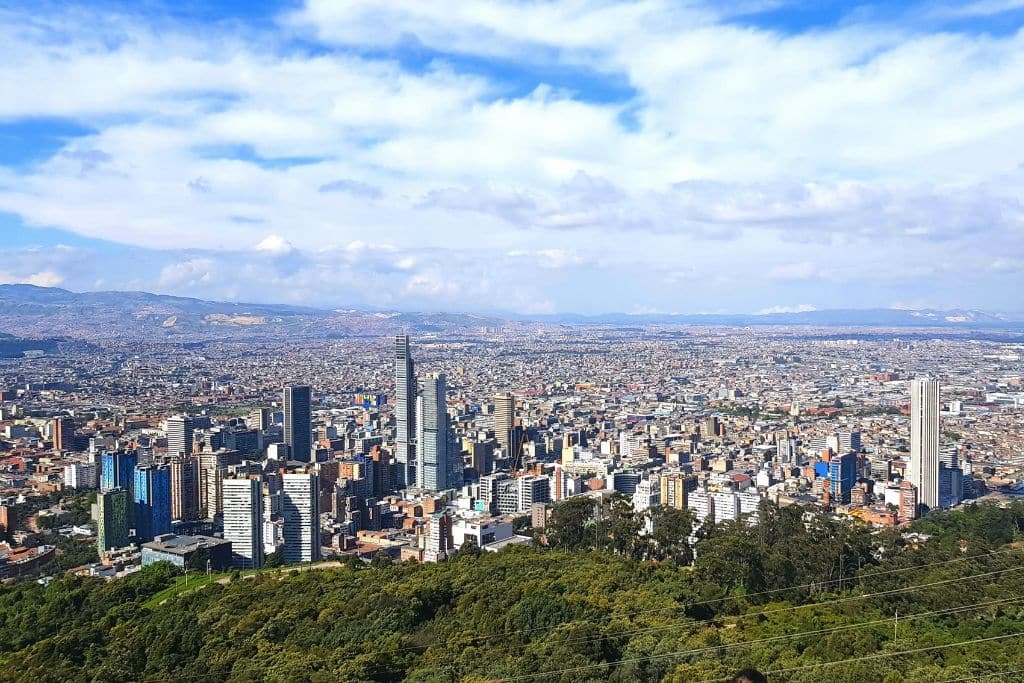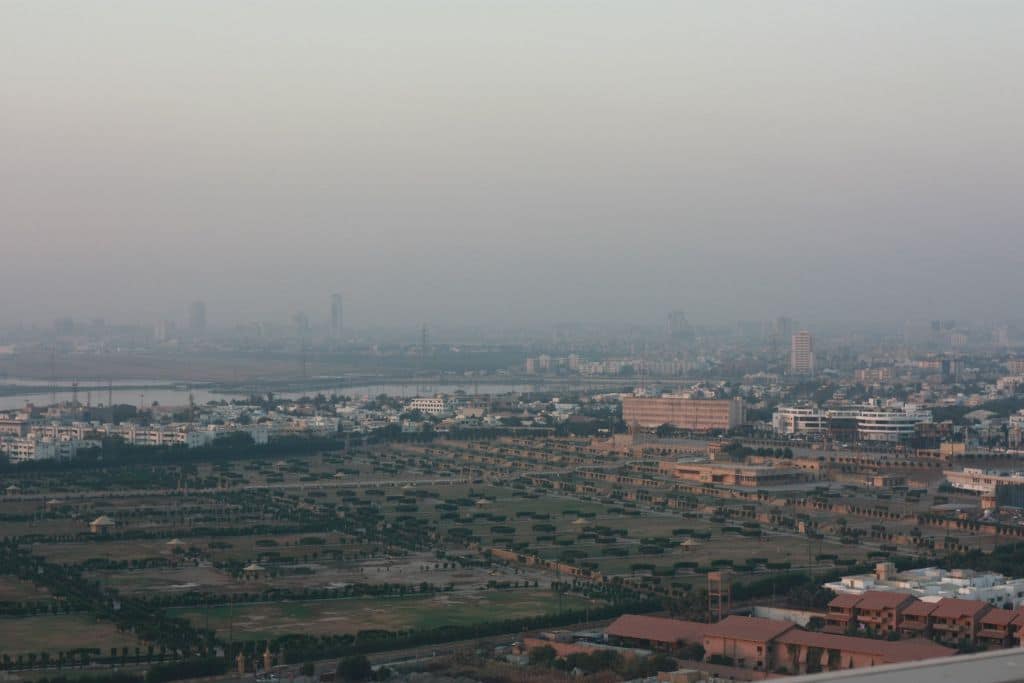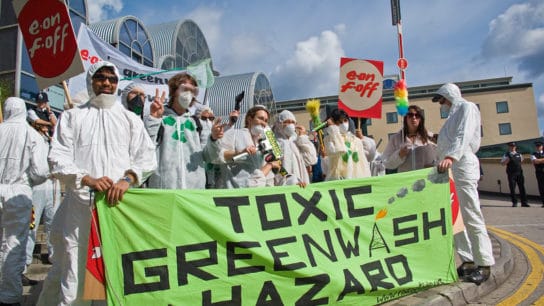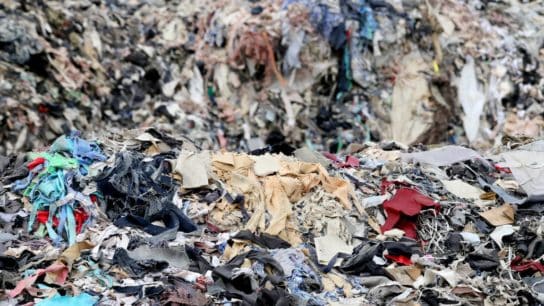Multiple recent days with extreme air pollution in New Delhi more than 50 times higher than the World Health Organization standard highlighted the risks to public health of continued reliance on fossil fuels. Rapidly urbanizing countries are struggling to meet the growing demand for energy while reducing their carbon footprint and preserving public health. Successful climate and clean air initiatives in cities such as Bogota and Warsaw provide hope for areas with a history of chronic pollution and poor air quality.
—
“Every year more cars, more buildings, more rubbish, more factories, filling the air with filth – is that worth more than our lives?” – Hartosh Singh, fruit vendor in Delhi during November 2024 extreme air pollution event.
New Delhi is a densely populated, growing city of 33 million that has long had among the worst chronic air pollution of any urban area in the world.
Agricultural burning of crop residue in northern India during fall and winter generates additional pollution that when combined with emissions in dense urban areas such as Delhi can result in extreme poor air quality events that endanger public health.
For several days between November 18 and November 26, 2024, the Air Quality Index in the city soared above 1,000, a level considered hazardous to all residents and far beyond the World Health Organization recommended safe limit of 50µg/m3. Pollution at this scale has forced local authorities to close schools, pause construction and ban diesel and other large trucks from entering the city, disrupting day-to-day life for millions of people.
This event is yet another reminder of a major issue affecting many rapidly industrializing and urbanizing developing countries worldwide, which have depended on fossil fuels such as coal to power economic growth. These nations are now struggling with the associated chronic public health outcomes and how to transition to cleaner energy sources.
Drivers of Urban Air Pollution
Economic growth powered by fossil fuels
Historically, developing countries have relied on coal, diesel and natural gas to power industrialization, expand public transportation modes and networks, meet the housing, cooking, heating and cooling needs of a rapidly growing population.
Even with the rapid growth of renewable energy development in recent years, the global economy is still largely dependent on fossil fuels.
Global carbon dioxide emissions reached an all-time high in 2023, and expanded production plans from 114 largest oil and gas companies are set to produce emissions sufficient to surpass the 1.5C warming threshold by 189% in 2040.

Weak or nonexistent air pollution monitoring and regulation
A global assessment of air pollution legislation completed by the United Nations Environment Programme found that definition and adoption of air quality standards varied widely among the 194 countries analyzed, owing to a lack of global standards.
Only half of these countries’ national air quality programs have an explicit focus on public health. 43% do not define air pollution, while 65% of them have no legally mandated ambient air quality standards. 55% of the countries with no legal air quality standard mandate have no air quality standards at all.
Even in countries that have air quality standards, these can permit a level of pollution that is hazardous to public health. For example, researchers estimated that the Indian air quality standard for particulate matter 2.5 (PM2.5) of 40µg/m3, which far exceeds the 5µg/m3 level considered safe by the United Nations, contributes to nearly 33,000 excess deaths per year across the country.
| Pollutant | 2021 AQGs |
| Fine particulate matter, µg/m3 | Annual: 5 24-hour: 15 |
| Ozone, µg/m3 | 8-hour: 100 |
| Nitrogen dioxide, µg/m3 | Annual: 25 24-hour: 40 |
Establishing air pollution standards may also be limited due to insufficient air quality monitoring stations and tracking data.
Significant disparities in air quality monitoring exist between industrialized countries in Europe and North America and those in Africa. Large cities in the western world average one air quality monitor per 100,000-600,000 residents compared with just one monitor per 4.5 million residents across urban areas in Africa. Only 24 of 54 African countries had sufficient monitoring data to be included in the 2024 IQAir Air Pollution Report.
Countries with limited air quality monitoring activities and capacity may also lack consistent funding for equipment, maintenance, data management systems and trained staff, and consistent access to electricity.

Agriculture
Seasonal farming practices including crop residue burning account for significant air pollution in India and other developing countries.
Each fall, farmers use burning to clear their fields of harvest residue and prepare for the winter planting season.
The practice has increased by 21% with the Mahatma Gandhi National Rural Employment Guarantee Act in 2005. Farmers began opting for mechanized harvesting, resulting in more residue left on the fields for clearance, in response to labor market shifts brought about by the government plan.
Public Health Burden of Air Pollution
Health impacts associated with climate change are at their worst level since monitoring and reporting began in 2015, according to the 2024 Lancet Countdown on Health and Climate Change report.
10 of 15 indicators for climate change-related health exposures, hazards and impacts, including extreme heat, precipitation, extreme weather events, infectious diseases, all reached new highs.

Exposure to and impacts from air pollution and poor air quality have been especially severe. The report identified a 31% increase in the number of people exposed to high particulate matter concentrations between 2003 and 2018. Exposure to air pollution increases the risk of respiratory and cardiovascular disease, cancer and diabetes.
Some 8.4 million deaths were attributable to air pollution in 2021, making it the second leading risk factor for death after high blood pressure and before tobacco.
The impacts are disproportionately felt in developing countries, which have far higher mortality rates. Meanwhile, air pollution and mortality have dramatically improved in wealthy, western countries including the UK, US and western European Union members, due in part to transition from coal to cleaner energy sources.
Barriers to the Energy Transition
Conflicting priorities
Without adequate financial support from rich nations, developing countries that are experiencing rapid population growth, industrialization and increased energy demand may be forced to continue burning fossil fuels, especially coal, to support continued economic growth.
Coal still contributes by far the most carbon dioxide emissions of any fuel source in the world and remains dominant in Asia even as the US, while EU states and the UK have largely transitioned to oil, natural gas and renewable energy sources. Coal subsidies, production and imports in India reached a record high in the first 6 months of 2024 due to record energy demand during the many extreme heat events the nation witnessed this summer.
Insufficient global climate financing available to support clean energy transition
The recent UN climate summit COP29 in Baku, Azerbaijan, yielded a commitment from wealthy countries to contribute a minimum of $300 billion per year by 2035 to help developing countries transition to clean energy, prepare for and adapt to the impacts of climate change.
While this new agreement tripled the previous yearly commitment of $100 billion, it is far below the $1.3 trillion per year experts say is needed by low-income countries.
Beyond decarbonization, only 0.5% of climate funding has been allocated to projects that protect or improve human health from climate hazards such as pollution and poor air quality.
How These Two Cities Are Addressing Air Pollution and Climate Change
Even with an overall global rise in emissions and surging demand for energy, cities around the world are taking action to decrease urban pollution and improve public health.
Transportation decarbonization in Bogotá, Colombia
In 2021, Bogotá, the capital of Colombia, launched the “United Pact for a New Air” with the goal of reducing concentrations of particulate matter 2.5 by 16% by the decade’s end. The initiative encompasses several decarbonization strategies focused on the transportation sector, which accounts for 70% of air pollution in the city.
Bogotá has committed to developing a fully electric rail system, transitioning to no and low emissions buses, encouraging teleworking wherever possible, expanding the existing bicycle path network and restricting emissions from trucks and other heavy emitters.

Air quality monitoring in Warsaw, Poland
Poland, which generates over 70% of electricity from coal (as compared to 16% for the entire EU), has some of the worst air pollution in Europe. 3,000 of the over 47,000 air pollution-associated deaths in the EU in 2021 occurred in its capital Warsaw, where air quality is on average three times the limit recommended by the WHO.
Launched in 2022, the Breathe Warsaw initiative supported development of a network of 165 air quality sensors, the largest in Europe. These stations will provide data for a comprehensive air quality database to inform government air quality planning.
Future Population Growth and Urbanization Increase Urgency for Action
The global population is projected to reach 9.7 billion by 2050, with 68% of the population living in urban areas. This, combined with urbanization, is anticipated to add 2.5 billion urban residents and over 40 “supercities” of more than 10 million residents worldwide. New Delhi is set to become the most populous city in the world at around 43 million residents by 2030.
Without aggressive global action to address climate change and reduce greenhouse gas emissions and air pollution, the health of hundreds of millions of people is at stake.
A report from the World Economic Forum examined how climate change will impact health and the global economy based on the International Panel on Climate Change’s “most likely” scenario of 2.7C temperature rise over pre-industrial levels by 2100. It concluded that climate change could cause an additional 14.5 million deaths per year from flooding, extreme heat, and air pollution. The latter is projected to be the largest contributor at almost 9 million additional deaths per year. Total economic losses may reach $12.5 trillion, and the global healthcare system is estimated to incur $1.1 trillion in additional costs due to climate change by mid-century.
Fortunately, these are only projections, and there is still time to invest the resources necessary to avoid the worst economic and public health outcomes. Studies have demonstrated that the benefits of investing in climate action and air pollution reduction now can yield results that dramatically outweigh the upfront costs. For example, the US Clean Air Act is estimated to have returned an economic benefit of $30 for every dollar invested in air pollution control through increased economic productivity, reduced healthcare costs and chronic disease and longer life spans.
Investing in climate change mitigation and climate resilience also yields significant savings, with the US Chamber of Commerce finding that each dollar invested in resilience and disaster preparedness saved $13 in economic impact, damage and cleanup costs after an extreme weather event.
Featured image: Adeel Anwer/Flickr.
This story is funded by readers like you
Our non-profit newsroom provides climate coverage free of charge and advertising. Your one-off or monthly donations play a crucial role in supporting our operations, expanding our reach, and maintaining our editorial independence.
About EO | Mission Statement | Impact & Reach | Write for us














